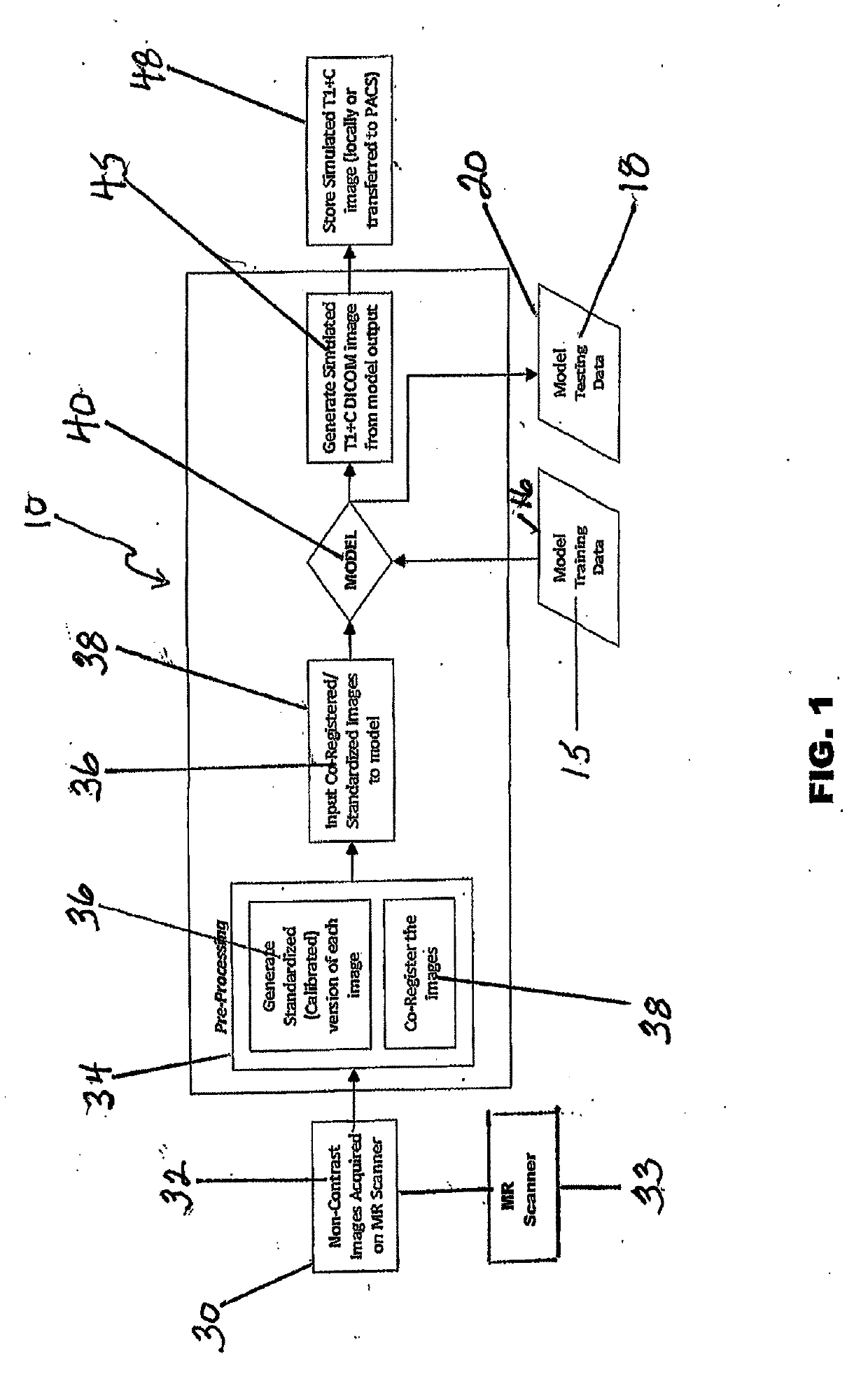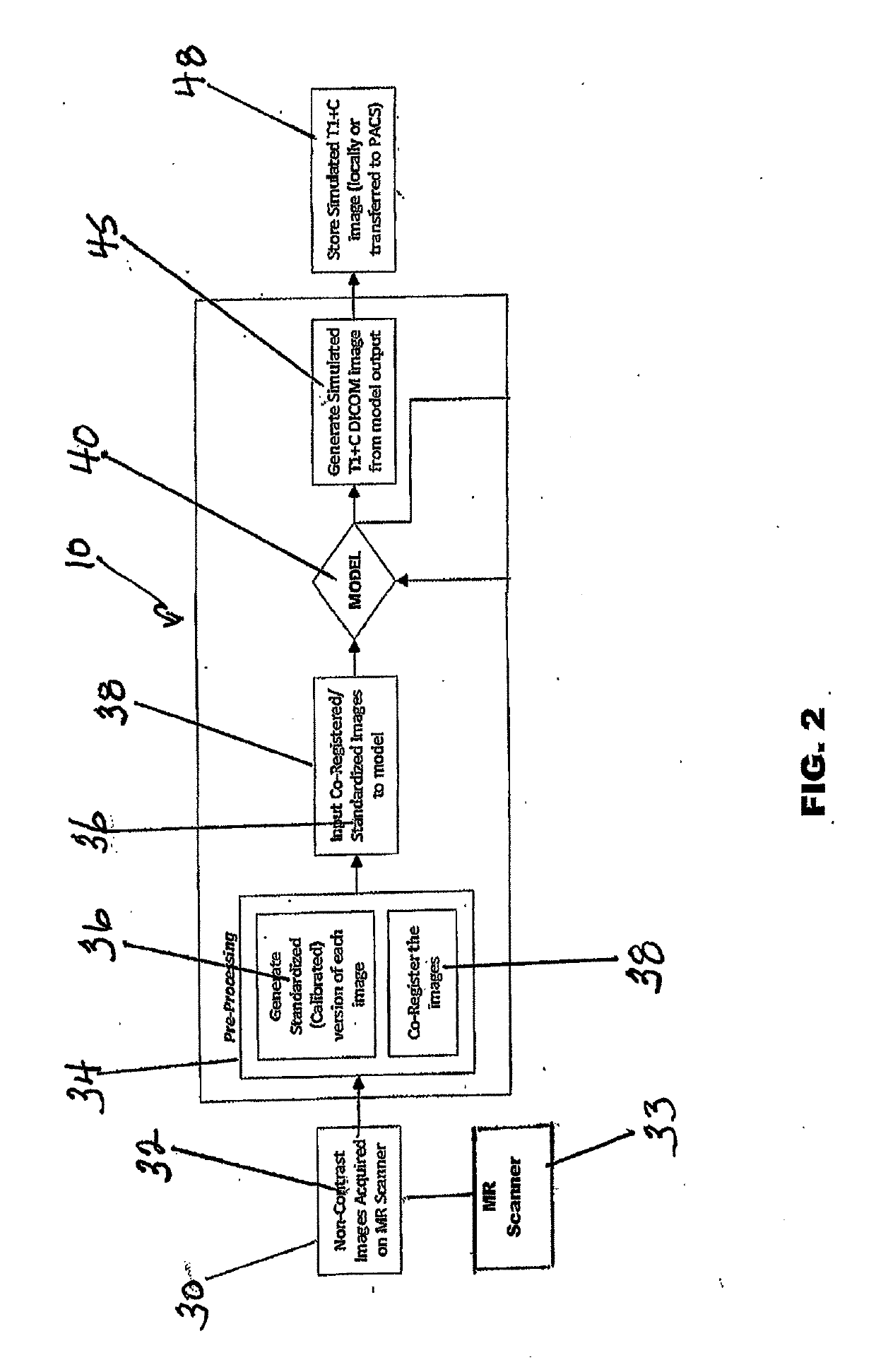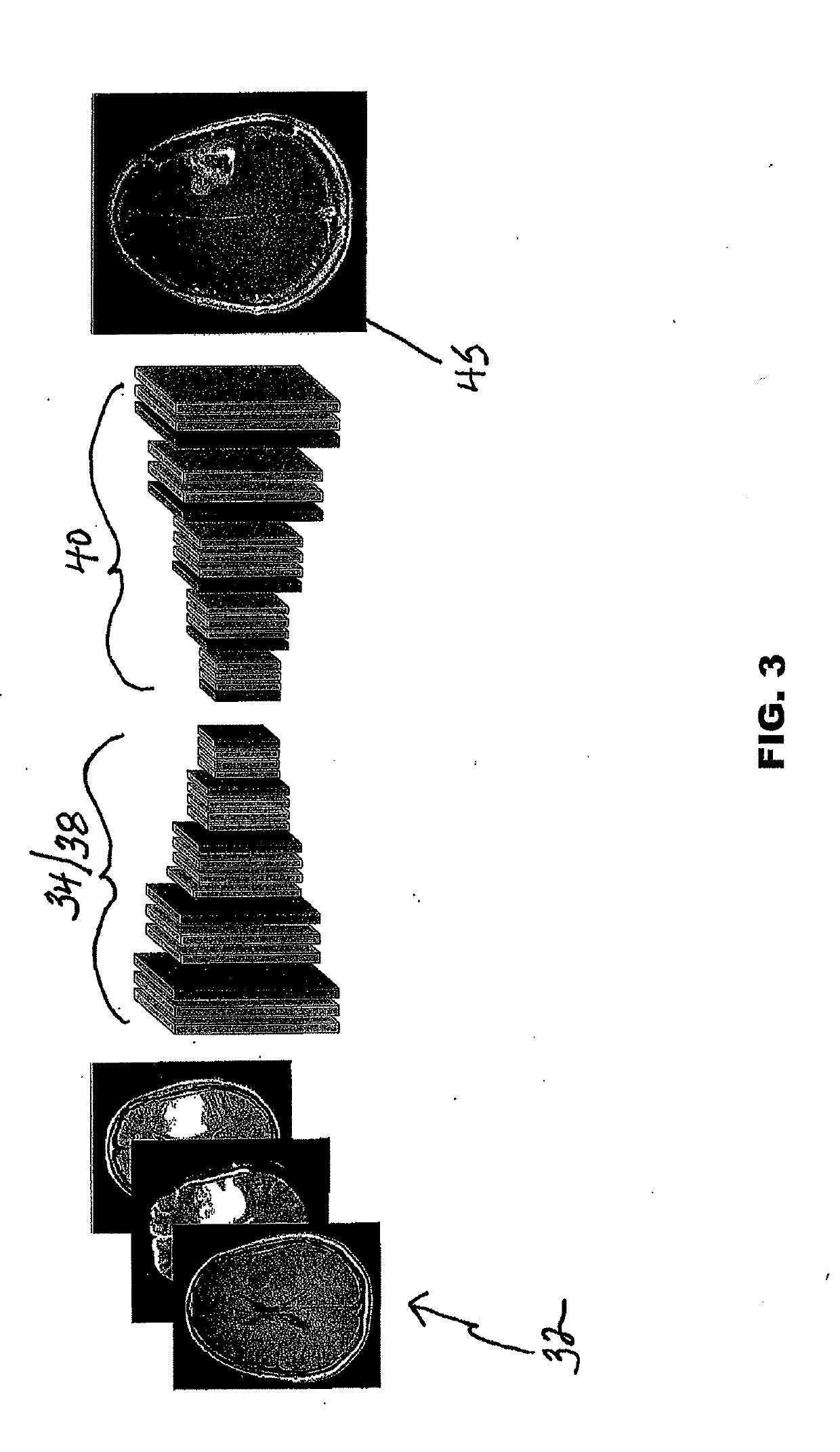Simulated Post-Contrast T1-Weighted Magnetic Resonance Imaging
a post-contrast, magnetic resonance imaging technology, applied in the field of system and non-invasive magnetic resonance imaging, can solve the problems of increased patient time, increased risk, and many heart abnormalities that cannot be fully assessed, and achieve the effect of removing common operational and procedural errors
- Summary
- Abstract
- Description
- Claims
- Application Information
AI Technical Summary
Benefits of technology
Problems solved by technology
Method used
Image
Examples
Embodiment Construction
[0029]Selected embodiments of the present invention will now be explained with reference to the figures and flow diagrams. It will be apparent to those skilled in the art from this disclosure that the following descriptions of the embodiments of the present invention are provided for illustration only and not for the purpose of limiting the invention as defined by the appended claims and their equivalents.
[0030]The visual information in MR images of brain lesions is provided by the change in tissue relaxivity due to the accumulation of contrast agent (CA) material in extravascular tissues caused by a permeable (“leaky”) blood-brain barrier arising from tumor angiogenesis or other disease processes. This information may also be available from a combination of anatomical and functional imaging performed prior to any introduction of exogenous CA. Machine learning is a field of artificial intelligence (AI) which uses statistical methods to impart to computer systems the ability to learn...
PUM
 Login to View More
Login to View More Abstract
Description
Claims
Application Information
 Login to View More
Login to View More - R&D
- Intellectual Property
- Life Sciences
- Materials
- Tech Scout
- Unparalleled Data Quality
- Higher Quality Content
- 60% Fewer Hallucinations
Browse by: Latest US Patents, China's latest patents, Technical Efficacy Thesaurus, Application Domain, Technology Topic, Popular Technical Reports.
© 2025 PatSnap. All rights reserved.Legal|Privacy policy|Modern Slavery Act Transparency Statement|Sitemap|About US| Contact US: help@patsnap.com



